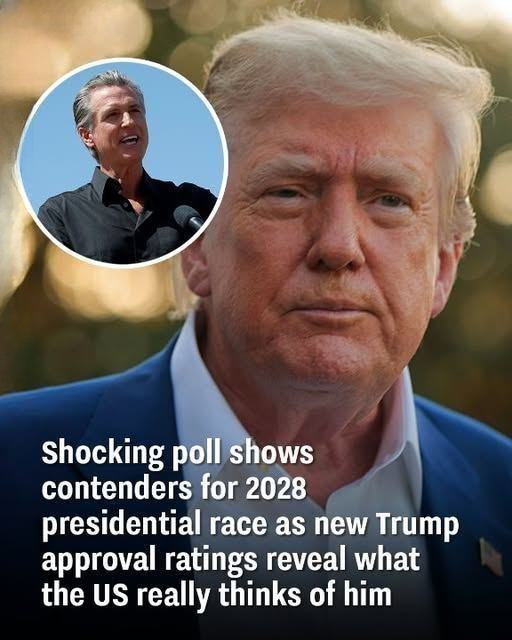As the 2028 U.S. presidential election approaches, early polling data is already reshaping the political conversation across the nation. Surveys conducted in 2025 suggest that both major parties are undergoing significant transformation, reflecting growing voter uncertainty and a desire for leadership that aligns with a rapidly evolving electorate.
Across states and demographics, Americans are questioning whether the Democratic and Republican parties still represent their values and priorities. This shift is prompting internal debates on ideology, messaging, and candidate selection, signaling the possibility of a new era in American governance.
Republican Reshaping: J.D. Vance Emerges as a Contender
In a surprising development, Vice President J.D. Vance has risen to prominence within the Republican Party. According to October 2025 polls from Echelon Insights, Vance holds 39% support among likely Republican primary voters, far ahead of Ron DeSantis (10%), Nikki Haley (8%), and Vivek Ramaswamy (5%). J.L. Partners reported even stronger numbers, placing him at 57%.
Vance’s ascent is seen by analysts as the beginning of a post-Trump era in the GOP. While Donald Trump Jr. maintains a presence with 14–21% support depending on the poll, his influence is largely seen as symbolic, representing continuity rather than new leadership. Political analyst Karen Dillard notes:
“What these numbers show is the beginning of a post-Trump era within the Republican Party. The shift is happening faster than anyone inside Washington predicted.”
J.D. Vance: From Author to Political Powerhouse
J.D. Vance first gained national attention as the author of Hillbilly Elegy, offering a candid perspective on social and economic struggles in rural America. His political career has since blended populist messaging with a calm, policy-focused approach.
Insiders describe his strategy as balancing the energy of Trump-era politics with the measured professionalism expected of national leadership. Vance emphasizes economic revitalization, family stability, national security, and American manufacturing—appealing to both traditional conservatives and working-class voters.
Historian Eleanor Warren compares his rise to George H.W. Bush’s transition after serving under Ronald Reagan:
“He’s the loyal vice president stepping forward to offer continuity without chaos. The public sees him as competent, thoughtful, and ready to lead.”
The Republican Field: Challenges and Competition
While Vance leads, the Republican primary remains competitive:
-
Ron DeSantis appeals to conservative activists with cultural and education-focused policies but struggles to broaden his base.
-
Nikki Haley positions herself as a moderate with international experience, emphasizing principled leadership.
-
Vivek Ramaswamy targets younger conservatives with a platform centered on innovation, deregulation, and anti-bureaucracy messaging.
Donald Trump Jr. continues to wield influence. While respected for his loyalty, he is not viewed as a visionary candidate. A potential endorsement from him, particularly for Vance, could significantly impact early primaries.
Democratic Dynamics: Experience Versus Renewal
On the Democratic side, Vice President Kamala Harris currently leads in early polls, ranging from 26% to 30% among primary voters. While her incumbency and diplomatic experience provide an advantage, critics cite uneven approval ratings and challenges connecting with working-class Americans.
Potential challengers include:
-
Pete Buttigieg: Known for infrastructure leadership and bipartisanship, appealing to centrists.
-
Gavin Newsom: Progressive and charismatic, focusing on climate change, public health, and economic equality.
-
Other figures: Cory Booker, Amy Klobuchar, and Alexandria Ocasio-Cortez represent diverse wings from centrist pragmatism to youthful progressivism.
Political journalist Samantha Rollins observes:
“The Democratic field mirrors the Republican one. It’s not just about policy — younger voters crave authenticity and vision; older voters prefer steadiness and experience.”
The Trump Factor: Legacy and Influence
Even years after leaving office, Donald Trump’s influence remains pervasive. A YouGov/Economist poll shows 56% of Americans believe he may attempt another presidential run, despite constitutional limits.
Trump’s impact is evident in both parties’ strategies, shaping messaging, coalition-building, and voter engagement. Historian Dr. Helena Ortiz notes:
“Trump may no longer be on the ballot, but he’s still in the political bloodstream. Every major figure in Washington is either embracing or distancing themselves from his legacy.”
Implications for the 2028 Election
Early polling reflects broader trends in American politics:
-
Voters increasingly prioritize competence, stability, and pragmatic leadership over personality-driven campaigns.
-
There is growing interest in bridging partisan divides and focusing on actionable policies.
-
Both parties face pressure to respond to shifting demographics, technological change, and evolving economic concerns.
Experts caution, however, that economic trends, international events, and social movements could dramatically reshape the landscape before election day.
Conclusion: America at a Crossroads
The early 2028 polls signal more than candidate popularity—they reveal a nation grappling with identity, priorities, and the future of governance. J.D. Vance’s rise, Kamala Harris’s balancing act, and the enduring influence of Donald Trump all underscore the evolving nature of American politics.
As the election approaches, voters are demanding leadership capable of uniting the country, prioritizing results over rhetoric, and navigating the challenges of the 21st century. While uncertainty remains, one truth is clear: the U.S. political landscape is transforming, and the 2028 election could redefine the nation’s democratic experiment.
